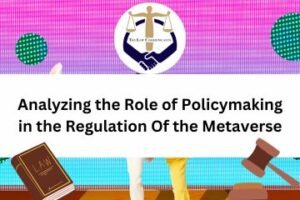Mens Rea and Actus Reus: Pillars of Criminal Liability
Written by: Samridhi Upadhyay
Table of Contents
- Abstract
- Introduction
- Actus Reus: The Material Element of Crime
- Elements of Actus Reus:
- Mens Rea: The Mental Element of Crime
- Types of Mens Rea:
- Strict Liability: When Mens Rea is Not Required
- Conclusion
- References
Abstract
Two pillars of criminal liability—Mens Rea (guilty mind) and Actus Reus (guilty act)—support criminal liability. They ensure that an individual is not convicted unless there is both the physical and mental aspect of an offence. Mens Rea is intention or knowledge to offend, while Actus Reus is the physical commission of an act which is prohibited. This essay addresses these doctrines, their uses, and intersections in criminal law. It takes into account seminal case law and statute governing the interpretations of criminal responsibility and offers an authoritative but simple introduction to the primary pillars of criminal law.
Introduction
The criminal law forms the foundation of justice systems around the globe to ensure offending individuals are prosecuted while also protecting citizens from spurious punishment. One major aspect of proving criminal liability involves showing two of the essential requirements: Mens Rea (the guilty mind) and Actus Reus (the guilty act). Such principles ensure that individuals are only held criminally liable if they not only commit an unlawful act, but also commit the act with a despicable frame of mind. This article discusses the definitions, significance, and interconnection of these factors, which show their role to provide justice in the judicial system.
Actus Reus: The Material Element of Crime
Actus Reus is the physical element of a crime, which is any act, default, or result that breaks against legal norms. No crime has been done without Actus Reus, regardless of the intention.
Elements of Actus Reus:
- Voluntary Conduct: The conduct must be willed and intentional. If the conduct is done involuntarily, e.g., due to reflex, hypnosis, or coercion, criminal liability may perhaps not follow.
- Hill v. Baxter, [1958] 1 QB 277: The court ruled that if a driver is suddenly attacked by a swarm of bees and crashes the car, they cannot be held liable because the act was involuntary.
- Omission as Actus Reus: In some cases, omission or inaction to do something may even constitute Actus Reus, particularly when there exists a duty imposed by law upon the offender to act.
- R v. Stone & Dobinson, [1977] QB 354: A couple failed to care for a sick relative who lived with them, leading to her death. The court held that they had a duty to act and were guilty of manslaughter.
- Causation: The defendant’s illegal act must bring about the prohibited effect directly.
- Factual Causation: The outcome must have directly resulted from the defendant’s act.
- R v. White, [1910] 2 KB 124: A man poisoned his mother’s drink, but she died of a heart attack before the poison took effect. Since his action did not cause her death, he was not guilty of murder.
- Legal Causation: The act must be a significant cause of the outcome.
- R v. Smith, [1959] 2 QB 35: A soldier was stabbed and later died due to poor medical treatment. The attacker was still held responsible since the original wound was a significant cause of death.
- Factual Causation: The outcome must have directly resulted from the defendant’s act.
Mens Rea: The Mental Element of Crime
Mens Rea refers to the state of mind or intention of the person while committing the crime. It defines the degree of culpability so that a person can be punished only if he possessed wrongful intent.
Types of Mens Rea:
- Intention: A purpose or intention to bring about a specific effect knowingly.
- Direct Intention: The defendant means to cause the outcome.
- R v. Mohan, [1975] 2 All ER 193: A driver deliberately drove his car towards a police officer, proving his intention to cause harm.
- Oblique Intention: The defendant foresees the consequence as almost certain.
- R v. Woollin, [1998] 4 All ER 103: A man threw his baby onto a hard surface, causing death. The court ruled that if death was a virtually certain outcome, intention could be inferred.
- Direct Intention: The defendant means to cause the outcome.
- Recklessness: The defendant is aware of a risk and proceeds despite it.
- Subjective Recklessness: The person knows the risk but takes it anyway.
- R v. Cunningham, [1957] 2 QB 396: A man tore a gas meter off a wall to steal money, releasing gas that harmed a neighbor. Since he was aware of the risk but acted anyway, he was found guilty.
- Objective Recklessness: Even if the person did not foresee the risk, they should have.
- R v. Caldwell, [1982] AC 341: A man set fire to a hotel without thinking about the risk to guests. The court ruled that a reasonable person would have seen the danger.
- Subjective Recklessness: The person knows the risk but takes it anyway.
- Negligence: The defendant does not act as a reasonable person would.
- R v. Adomako, [1994] 3 All ER 79: A doctor failed to notice a disconnected oxygen tube, leading to a patient’s death. The court ruled that his gross negligence made him criminally responsible.
Strict Liability: When Mens Rea is Not Required
Some crimes do not require Mens Rea, especially in regulatory offenses like road safety and food standards.
- Pharmaceutical Society of Great Britain v. Storkwain Ltd., [1986] AC 582: A pharmacist unknowingly dispensed drugs with a forged prescription. Despite no intent, he was held guilty because the offense was strict liability.
Conclusion
Mens Rea and Actus Reus are the basis of criminal liability, ensuring fairness in punishment. While strict liability offenses exist, the general rule is that both intent and action must be proven to establish guilt. Understanding these principles is essential for law students and practitioners, as they form the foundation of criminal justice.
References
- Kenny, C.S., Outlines of Criminal Law.
- Smith, J.C. & Hogan, B., Criminal Law.
- Glanville, W., Principles of Criminal Law.
- Indian Penal Code, 1860, ss 299, 300.
- Criminal Justice Act 1967 (UK), s 8.
- Road Traffic Act 1988 (UK), s 3A.
- Simester, A.P. & Sullivan, G.R., “Mens Rea in the Criminal Law” (2000) 63(3) MLR 491.
- Ashworth, A., “Principles of Criminal Liability: A Review” (1999) 112 LQR 292.




